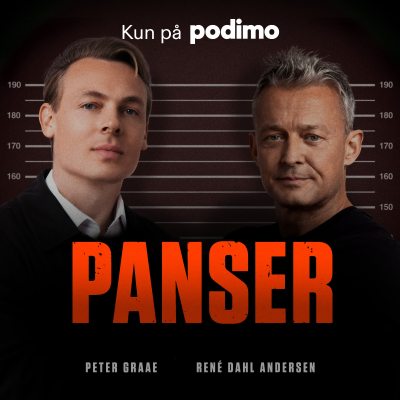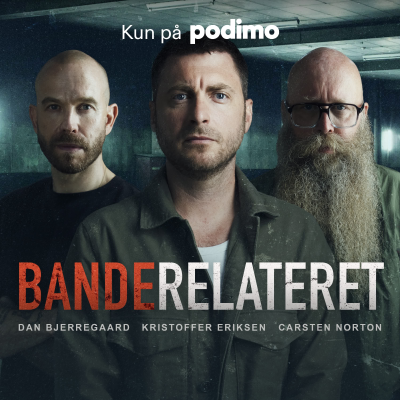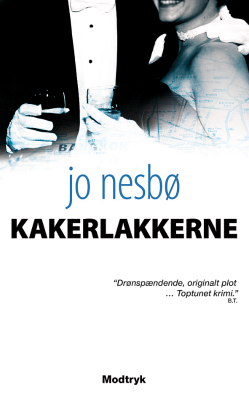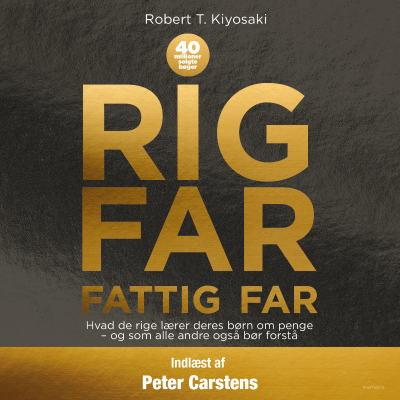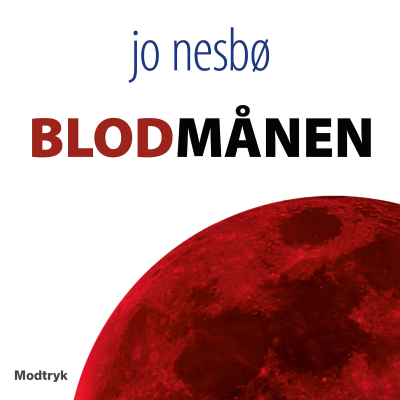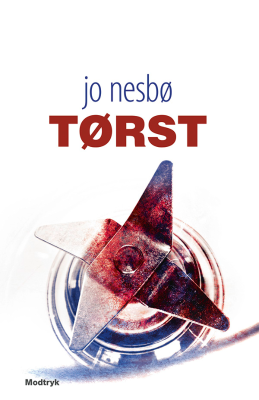
The Sleep Disorders Toolkit
engelsk
Videnskab & teknologi
3 måneder kun 9 kr. Derefter 99 kr. / måned. Ingen binding.
Læs mere The Sleep Disorders Toolkit
From Sleep Review Magazine comes "The Sleep Disorders Toolkit", a podcast meticulously crafted for sleep apnea and sleep medicine professionals. Distinguished for its depth and precision, each episode offers rigorous analyses, driven by the leading voices in the industry. Practitioners will find themselves immersed in both foundational knowledge and the very latest advances in sleep disorder management. This isn’t just content; it's a deep dive into the intricacies and nuances of sleep medicine. For those dedicated to the pursuit of excellence in sleep health, The Sleep Disorders Toolkit emerges as the paramount resource, elevating standards and shaping the future of sleep medicine.
Alle episoder
28 episoderPathophysiology of Idiopathic Hypersomnia
While the pathophysiology of idiopathic hypersomnia is unknown, emerging science suggests that nighttime sleep dysfunction may contribute to daytime sleepiness in patients with idiopathic hypersomnia. A systematic review and meta-analysis that included 10 studies found that, on average, several sleep architecture hallmarks were different in patients with idiopathic hypersomnia relative to controls. * Total sleep time and percent of REM sleep were increased in patients with idiopathic hypersomnia compared with controls. * Sleep-onset latency and percent of slow-wave sleep were decreased in patients with idiopathic hypersomnia compared with controls. * Sleep efficiency and REM latency were similar between patients with IH and controls. In addition to nighttime sleep dysfunction, other physiological changes have been observed in some patients with idiopathic hypersomnia and theorized as possible contributors to its pathophysiology including: * Dysfunction of the GABAergic system * Autonomic system dysfunction * Altered functional or regional connectivity in the brain * Circadian system dysfunction * Dysfunction of energy metabolism This episode is produced by Sleep Review and is episode 5 of a 5-part series sponsored by Jazz Pharmaceuticals. Visit Jazzpharma.com [https://www.jazzpharma.com/] and SleepCountsHCP.com [https://sleepcountshcp.com/] for more information. In episode 5, listen as Sleep Review’s Sree Roy and neurologist-sleep specialist Isabelle Arnulf, MD, PhD, discuss: * Science doesn’t fully understand the pathophysiology of idiopathic hypersomnia. Research has revealed potential clues, however. For example, idiopathic hypersomnia is associated with changes in sleep staging and architecture. What does emerging science suggest are differences in nighttime sleep? * How might the arousal index differ in idiopathic hypersomnia versus in people without it, and why might that matter? * In addition to nighttime sleep dysfunction, other physiological changes have been observed in some patients with idiopathic hypersomnia and theorized as possible contributors to its pathophysiology. What is the GABAergic system and its possible role? * What are some emerging findings surrounding idiopathic hypersomnia and autonomic system dysfunction? * What is the evidence that supports the idea of altered functional or regional connectivity in the brain in people with idiopathic hypersomnia? * There were fascinating studies done on skin fibroblasts, suggesting that circadian period length may be different in people with idiopathic hypersomnia versus in people without it. What role might circadian rhythm dysfunction have in idiopathic hypersomnia? * What has science discovered about the possible role of dysfunction of energy metabolism in idiopathic hypersomnia? * What further research would you like to see conducted on the pathophysiology of idiopathic hypersomnia? Listen to Episode 1: Symptoms of Idiopathic Hypersomnia [https://sleepreviewmag.com/resource-center/podcasts/strongsymptoms-idiopathic-hypersomnia-strong/] Listen to Episode 2: Diagnosis of Idiopathic Hypersomnia [https://sleepreviewmag.com/sleep-disorders/hypersomnias/idiopathic-hypersomnia/diagnosis-idiopathic-hypersomnia] Listen to Episode 3: Differential Diagnosis of Idiopathic Hypersomnia [https://sleepreviewmag.com/sleep-disorders/hypersomnias/idiopathic-hypersomnia/differential-diagnosis-idiopathic-hypersomnia] Listen to Episode 4: Burden of Idiopathic Hypersomnia [https://sleepreviewmag.com/sleep-disorders/hypersomnias/idiopathic-hypersomnia/burden-idiopathic-hypersomnia]
Burden of Idiopathic Hypersomnia
People with idiopathic hypersomnia face a significant disease burden. Idiopathic hypersomnia is associated with challenges that impact daily living activities, such as limitations at school, work, interpersonal relationships, and social activities. Various impairments include * * Impacts on attention and cognition, which can be characterized as “brain fog” * The burden of memory problems and a feeling of the mind going blank or making a mistake in a habitual activity Public health and safety are also impacted, as more severe causes of sleepiness can be cause for accidents. Management strategies may not address the underlying sleep dysfunction associated, resulting in suboptimal symptom management. Patient survey and registry data suggest patients continue to experience symptoms of idiopathic hypersomnia and residual disease burden. This episode is produced by Sleep Review and is episode 4 of a 5-part series sponsored by Jazz Pharmaceuticals. Visit Jazzpharma.com [https://www.jazzpharma.com/] and SleepCountsHCP.com [https://sleepcountshcp.com/] for more information. In episode 4, listen as Sleep Review’s Sree Roy and pulmonologist-sleep specialist Richard K. Bogan, MD, discuss: * * What are some limits that people with idiopathic hypersomnia can experience in their daily living activities? * How do people with idiopathic hypersomnia commonly describe "brain fog," and what are some of the real-life consequences it? * How does prolonged sleep inertia place a burden on the people with idiopathic hypersomnia who experience this symptom? * What do you see as the burden of idiopathic hypersomnia on public health and safety? * Beyond medications, how is idiopathic hypersomnia typically managed to control for symptoms as much as possible? * How do you determine when therapy for idiopathic hypersomnia has been optimized, and what symptoms may remain at this point?
Mouth Taping During Sleep
This episode also provides valuable advice for sleep techs dealing with patients wanting to use mouth tape during in-lab sleep studies. DeNike underlines the importance of ensuring patients have a healthy nasal passageway [https://sleepreviewmag.com/sleep-disorders/breathing-disorders/obstructive-sleep-apnea/sleep-apnea-treatment-out-of-order/] and clarifies the role of mouth tape as a supportive accessory, not a standalone treatment. This episode is sure to provide you with a deeper understanding of mouth taping during sleep, armed with expert advice and valuable insights, whether you're a sleep professional or someone simply interested in optimizing your sleep health. In this episode, we answer the questions: * What exactly is mouth taping during sleep? * How has the practice of mouth taping during sleep evolved in popularity over the years? * Is there any evidence that mouth taping is useful for healthy sleepers, that is, people without any sleep disorders? * Is there any evidence that mouth taping is useful for people with any sleep disorders, perhaps as an add-on to a device such as an oral appliance for sleep apnea? * What dangers are associated with mouth taping during sleep? * What is your advice to sleep techs for how to handle the situation of an in-lab sleep study patient who wants to use mouth taping during an in-lab sleep study? * What is your evidence to sleep medicine professionals if their patients confide in them that they using mouth tape, either with or without their prescribed device, to treat a sleep disorder?
Differential Diagnosis of Idiopathic Hypersomnia
The differential diagnosis of idiopathic hypersomnia is challenging for several reasons. Its hallmark symptom, excessive daytime sleepiness, is a common symptom of many disorders, and ts ancillary symptoms also overlap with other disorders. A lack of validated biomarkers adds to the challenge. Assessing for key symptoms and medical history is a first step to help identify patients presenting with excessive daytime sleepiness who may have idiopathic hypersomnia. From there, there are several symptoms that can differentiate the diagnosis of idiopathic hypersomnia from other disorders such as sleep apnea or narcolepsy. These include: * * Sleep inertia: sleep inertia is common in patients with idiopathic hypersomnia but can also be reported by individuals with mood disorders * Patients with idiopathic hypersomnia often find naps to be long and unrefreshing, while patients with narcolepsy generally find short naps to be restorative * If a patient has prolonged nighttime sleep, long sleeper syndrome should be considered; in contrast to patients with idiopathic hypersomnia, long sleepers feel refreshed and do not have daytime sleepiness and difficulty awakening if they are allowed to sleep as long as they need * Cognitive complaints, often described as "brain fog" are common symptoms of idiopathic hypersomnia but also can occur in patients with various sleep-wake disorders (including narcolepsy type 1 and insufficient sleep syndrome) This episode is produced by Sleep Review and is episode 3 of a 5-part series sponsored by Jazz Pharmaceuticals. Visit Jazzpharma.com [https://www.jazzpharma.com/] and SleepCountsHCP.com [https://sleepcountshcp.com/] for more information. In episode 3, listen as Sleep Review’s Sree Roy and neurologist-sleep specialist Yves Dauvilliers, MD, PhD, discuss: * * Idiopathic hypersomnia can be particularly challenging to diagnose because of its lack of specific biomarkers, as well as its symptoms resembling those of other disorders. How do you differentiate idiopathic hypersomnia from hypersomnias of a specific cause, such as narcolepsy type 1 and type 2, insufficient sleep syndrome, or hypersomnia due to a neurodegenerative disease? * A minority of people simply need to sleep longer than most, even 10 hours or more, to feel refreshed. How do you determine if that applies to a given person, who may not have a sleep disorder at all? * How do you differentiate idiopathic hypersomnia from hypersomnia comorbid to psychiatric disorders, such as prolonged sleep time tied to depression? * At what point in ruling out other disorders should objective sleep testing, such as polysomnography and multiple sleep latency testing, be done? * Why is idiopathic hypersomnia sometimes confused with sleep-breathing disorders? When would you recommend a CPAP trial to address possible apneas, hypopneas, or respiratory-event related arousals? * How do you distinguish chronic fatigue syndrome from idiopathic hypersomnia? Listen to Episode 1: Symptoms of Idiopathic Hypersomnia [https://sleepreviewmag.com/resource-center/podcasts/strongsymptoms-idiopathic-hypersomnia-strong/] Listen to Episode 2: Diagnosis of Idiopathic Hypersomnia [https://sleepreviewmag.com/sleep-disorders/hypersomnias/idiopathic-hypersomnia/diagnosis-idiopathic-hypersomnia]
The Hidden Risks of Obstructive Sleep Apnea
Sleep specialist Indira Gurubhagavatula, MD, MPH, is our guest and chair of the Count on Sleep Tool Development and Surveillance Workgroup for The Obstructive Sleep Apnea: Indicator Report [https://sleepeducation.org/wp-content/uploads/2023/03/obstructive-sleep-apnea-indicator-report.pdf], which provides an in-depth analysis of the symptoms, risk factors, prevalence, and burden of obstructive sleep apnea and serves as a resource for both the public and the health care communities on the importance of diagnosis and long-term treatment. Gurubhagavatula and Sleep Review editor Sree Roy discuss the hidden risks of obstructive sleep apnea—the mortality and morbidity that makes obstructive sleep apnea (OSA, for short) particularly insidious. We discuss obstructive sleep apnea’s links to vehicle crashes [https://sleepreviewmag.com/practice-management/laws-regulations/commercial-transportation/fatal-multivehicle-crash-elmhurst-sleep-apnea/], treatment-resistant hypertension, impaired brain function, erectile dysfunction [https://sleepreviewmag.com/sleep-health/sleep-whole-body/low-quality-life-depression-erectile-dysfunction-sleep-apnea/] and female sexual dysfunction, type 2 diabetes [https://sleepreviewmag.com/sleep-disorders/breathing-disorders/obstructive-sleep-apnea/investigate-possible-links-sleep-apnea-treatment-diabetes-management/], and early death [https://sleepreviewmag.com/sleep-health/demographics/race-ethnicity/sleep-apnea-deaths-stable-except-black-men/]. We also discuss treatments for obstructive sleep apnea and how healthcare providers can screen patients to intervene early for patients at risk of obstructive sleep apnea. Specifically, this episode about the hidden risks of obstructive sleep apnea provides answers to: * What is obstructive sleep apnea, also known as OSA for short? * What do you think is the most troubling risk of not treating obstructive sleep apnea? * How has treatment-resistant hypertension been linked to OSA? * How can the impaired brain function linked to OSA manifest in patients? * What evidence is out there that erectile dysfunction and female sexual dysfunction can be tied to OSA? * How has obstructive sleep apnea been linked to diabetes? * The worst link in my view is that obstructive sleep apnea has been linked to an earlier death. Why is that? * Treatment of sleep apnea typically involves a device, such as a CPAP machine or an oral appliance, though surgery can be an option for some patients. Is there any evidence that treating OSA can alleviate some of sleep apnea morbidities or mortality? * With all of this evidence in mind, what should healthcare providers do to help identify patients who are likely to have obstructive sleep apnea? * What should any patients listening to this podcast do if they think they have symptoms of obstructive sleep apnea?
Vælg dit abonnement
Begrænset tilbud
Premium
20 timers lydbøger
Podcasts kun på Podimo
Gratis podcasts
Ingen binding
3 måneder kun 9 kr.
Derefter 99 kr. / måned
Premium Plus
100 timers lydbøger
Podcasts kun på Podimo
Gratis podcasts
Ingen binding
Prøv gratis i 7 dage
Derefter 129 kr. / måned
3 måneder kun 9 kr. Derefter 99 kr. / måned. Ingen binding.


